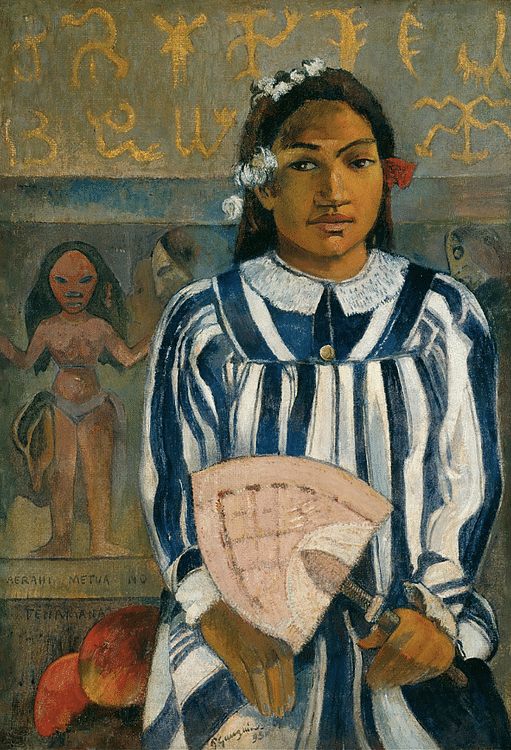Image Gallery
Merahi Metua no Tehamana by Gauguin
An 1893 oil on canvas, Merahi Metua no Tehamana (Tehamana Has Many Parents or The Ancestors of Tehamana), by Paul Gauguin (1848-1903) the French post-impressionist painter. Painted in Tahiti, one of the final works completed by the artist there during his first visit. Tehamana was the teenage girl Gauguin lived with. The artist here shows the contrast between the traditional Tahitian in the background painting and Tehamana in the European clothes that missionaries promoted on the island. The title refers to the Tahitian custom of youngsters having both real and foster parents. (Art Institute of Chicago, USA)
Bibliography
- Bouruet-Aubertot, Veronique. The Complete Book of Impressionism . Ji Mu Wen Hua, 2020.
- Howard, Michael. Encyclopedia of Impressionism. Thunder Bay Pr, 1997.
- Rubin, James H & Lablanche, Dominique & Manss, Thomas. Impressionism A&I . Phaidon Press, 1999.
- Thomson, Belinda. Impressionism. Thames & Hudson, 2022.
Questions & Answers
How did Impressionism change the art world?
- Impressionism changed the art world because it changed the focus to everyday subjects rather than religious and mythological ones. Impressionist painters also used brighter colours and focussed on capturing momentary scenes of light or human activity.
What is the most famous Impressionist painting?
- Today, probably the most famous impressionist painting is Water Lilies by Claude Monet.
Which Impressionist went blind?
- Claude Monet was an impressionist painter who almost went blind. His sight deteriorated so much he could not distinguish colours or shapes for his work without special glasses and, eventually, an operation.
What changes did post impressionist paintings show?
- Post-Impressionist paintings made changes to impressionism, chiefly adding more symbolism and the more dramatic use of contrasting colours,

